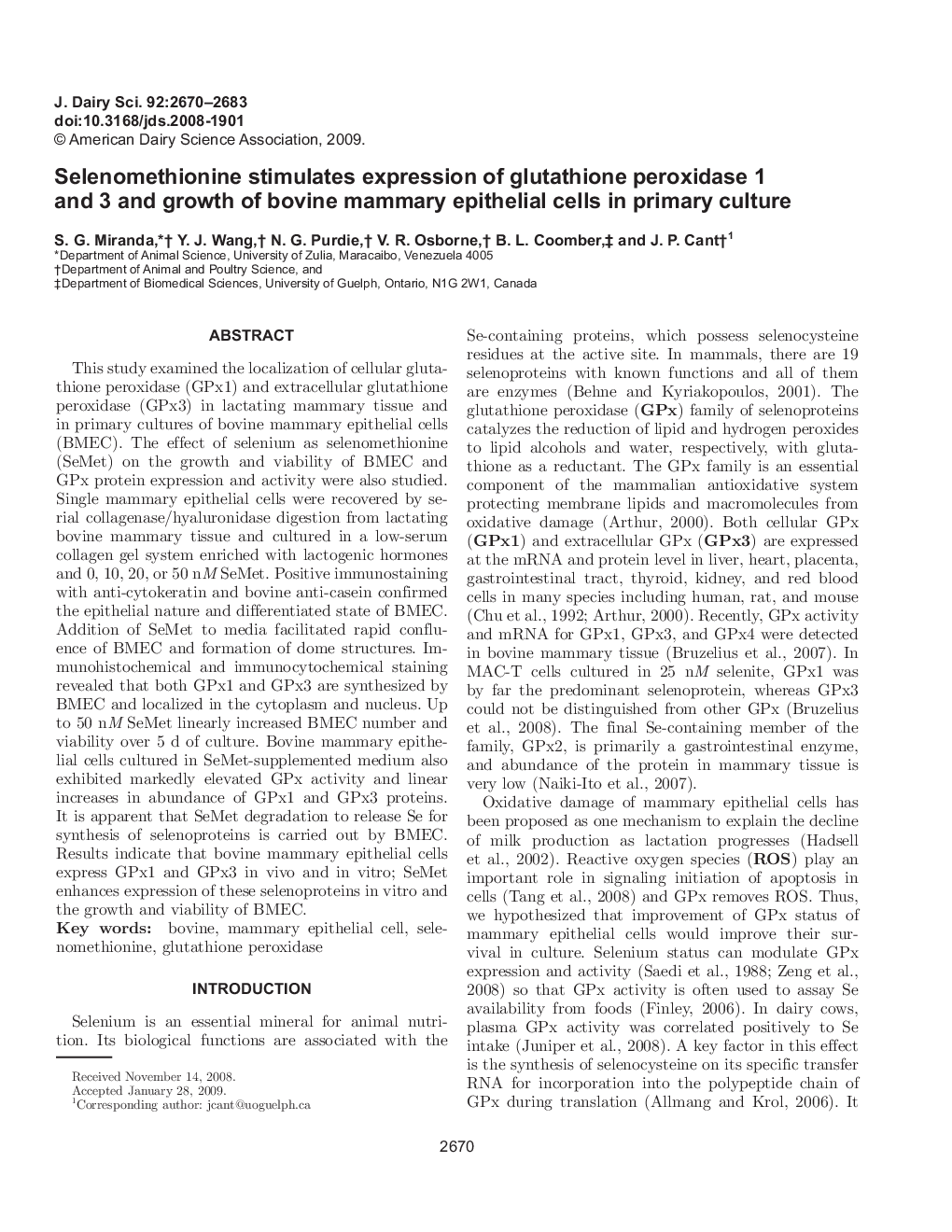| Article ID | Journal | Published Year | Pages | File Type |
|---|---|---|---|---|
| 2439288 | Journal of Dairy Science | 2009 | 14 Pages |
Abstract
This study examined the localization of cellular glutathione peroxidase (GPx1) and extracellular glutathione peroxidase (GPx3) in lactating mammary tissue and in primary cultures of bovine mammary epithelial cells (BMEC). The effect of selenium as selenomethionine (SeMet) on the growth and viability of BMEC and GPx protein expression and activity were also studied. Single mammary epithelial cells were recovered by serial collagenase/hyaluronidase digestion from lactating bovine mammary tissue and cultured in a low-serum collagen gel system enriched with lactogenic hormones and 0, 10, 20, or 50 nM SeMet. Positive immunostaining with anti-cytokeratin and bovine anti-casein confirmed the epithelial nature and differentiated state of BMEC. Addition of SeMet to media facilitated rapid confluence of BMEC and formation of dome structures. Immunohistochemical and immunocytochemical staining revealed that both GPx1 and GPx3 are synthesized by BMEC and localized in the cytoplasm and nucleus. Up to 50 nM SeMet linearly increased BMEC number and viability over 5 d of culture. Bovine mammary epithelial cells cultured in SeMet-supplemented medium also exhibited markedly elevated GPx activity and linear increases in abundance of GPx1 and GPx3 proteins. It is apparent that SeMet degradation to release Se for synthesis of selenoproteins is carried out by BMEC. Results indicate that bovine mammary epithelial cells express GPx1 and GPx3 in vivo and in vitro; SeMet enhances expression of these selenoproteins in vitro and the growth and viability of BMEC.
Related Topics
Life Sciences
Agricultural and Biological Sciences
Animal Science and Zoology
Authors
S.G. Miranda, Y.J. Wang, N.G. Purdie, V.R. Osborne, B.L. Coomber, J.P. Cant,
